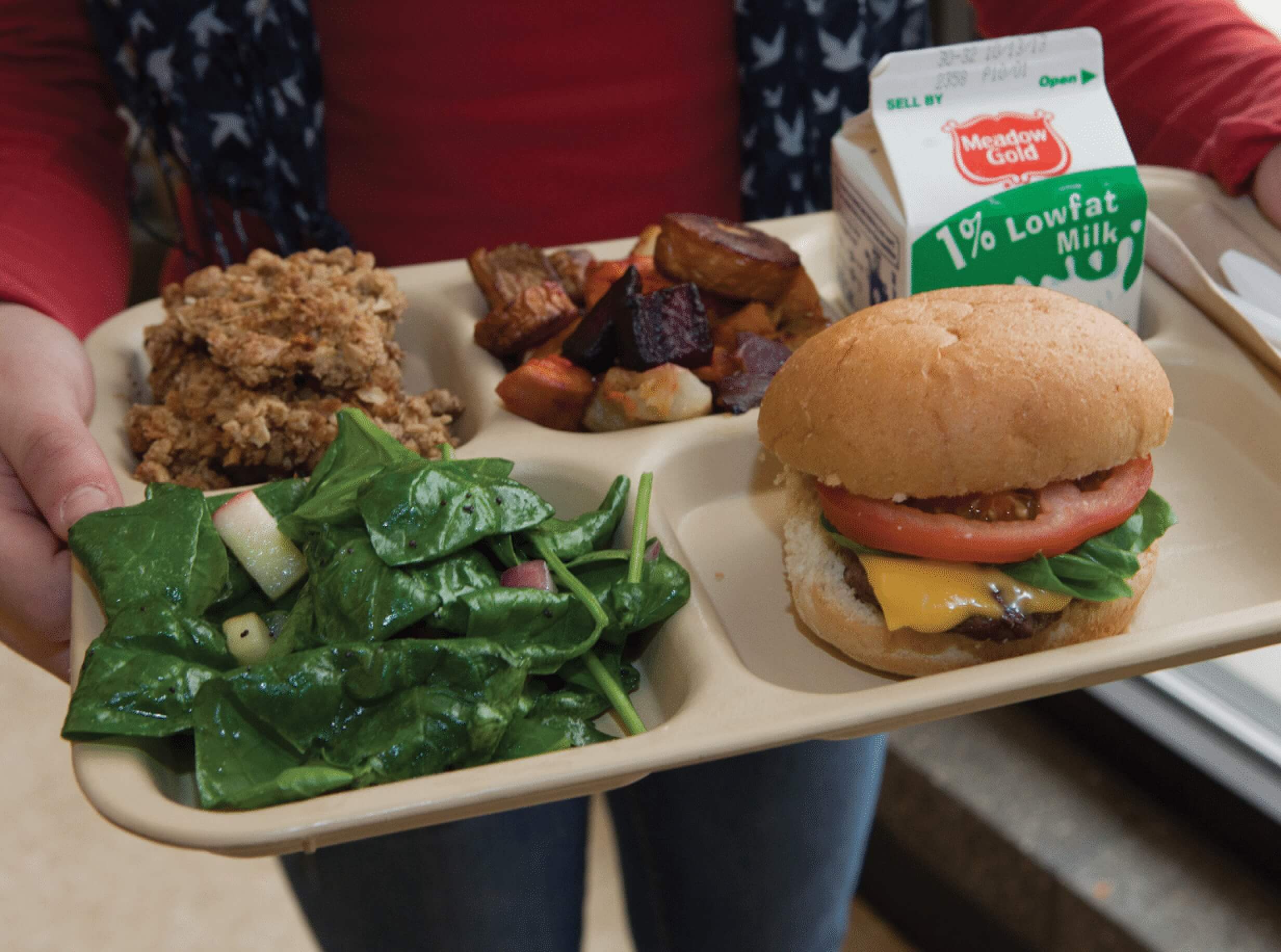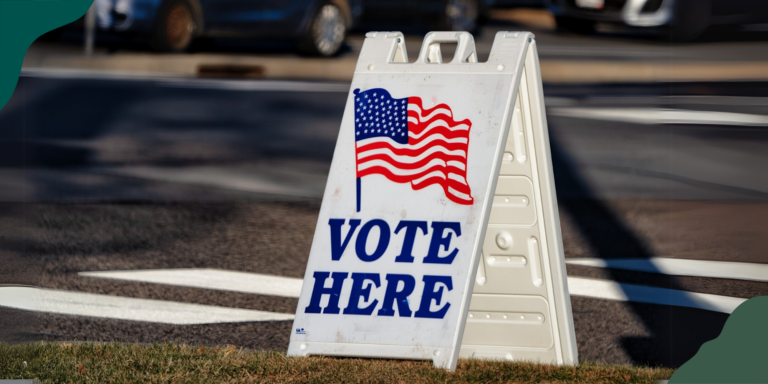3 Reasons We Need School Meals for All
Free school meals for all kids are critical. Here’s why they make such a big difference.
Free school meals for all kids are critical. Here’s why they make such a big difference.

Last month, the Senate passed a $1.5 trillion spending bill that did not include an extension of school meal waivers. This omission means that free school meals for all—which kept millions of kids fed throughout the pandemic—could end on June 30.
But this work is not over. Senate Agriculture Chairwoman Debbie Stabenow (D-MI) and Senator Lisa Murkowski (R-AK) have introduced the bipartisan “Support Kids Not Red Tape Act of 2022,” which would extend school meals for all waivers until September 30, 2023.
School meals for all means that every student, in every school, can receive the same breakfast or lunch free of charge, regardless of their family income. It’s an important move for advancing equity in school nutrition, and for ensuring that all kids are nourished at school and ready to learn.
Why else should we prioritize school meals for all? Let’s dig in.
In pre-pandemic times, 30 million children ate school lunch every day, with nearly 77% of them receiving free and reduced-price school meals. Families of color are disproportionately impacted by food insecurity, a product of systemic racism and classism, which keeps kids from showing up to school with full bellies and focused minds.
Free school meals are available to students who qualify based on family income, but the logistical requirements of the program prevent all eligible families from participating. Families who could benefit from receiving free school meals might not meet the income criteria for the program as it currently stands. And some families, such as undocumented or non-English speaking families, may be hesitant to apply at all.
School meals for all eliminates these hurdles, ensuring that every student has the option to enjoy a healthy breakfast and lunch free of charge, regardless of their family income or background. And access to nourishing meals is a foundation for every child’s ability to learn: poor nutrition in children is linked to slower progress in math and reading, lower grades, an inability to focus, and increases in anxiety and depression. School meals for all helps every kid show up at school ready to try their best.
“In schools that have families with more socioeconomic resources, there are students who get left out,” says Lydia Yamaguchi, Wellness Specialist for Oakland Unified School District. “They might be less likely to participate in the meal program without universal free meals, either because of stigma or because the process for signing up involves additional steps. For what that means across the school district, we don’t want to leave any student behind.”
Ask any school nutrition director, and they’ll tell you that feeding hundreds of kids a day is about much more than portioning carrots on a lunch tray. School nutrition involves a huge amount of administrative work: outreach to families explaining how to apply for free or reduced meals, processing each application, and verifying that each student is assigned the right payment category per meal.
Not only would school meals for all reduce this burden, it would also reduce administrative costs per meal, allowing more dollars to be spent on nourishing, locally sourced, scratch-cooked foods.
“Part of having the ability to not charge students and have participation go up is you can use those funds to buy fresh fruits and vegetables or procure things from a local farmer,” says Rob Shaheen, Food Service Director for New Bedford Schools. “Then you’re feeding students and investing in a community.”
Furthermore, school nutrition departments are still facing disruptive and expensive supply chain issues that make it difficult to serve kids. These teams are unable to predict what menu items will be available and often receive deliveries with missing components, causing them to pay for more items at the last minute through rush deliveries. The support of free school meals for all is incredibly helpful in navigating these challenges, too.
Finally, school meals for all can improve the execution of daily meal service for school nutrition teams, ensuring that everything runs more smoothly. According to a report by the Colorado Food Systems Advisory Council:
“Universal meal programs eliminate the need in many districts for staff and time-intensive meal service protocols (like requiring each student to enter their student number at the register and taking cash payments) which will (1) facilitate smoother school meal times, allowing food service managers to focus on preparing and serving meals and (2) give students more time to eat (which would in turn reduce plate waste) and return to the classroom in a timely manner.”
Every child deserves to be nourished and celebrated at school. But that vision is incompatible with a world where kids are treated differently based on their family income.
While free school meals are already an option for some students, there are still challenges in making sure they reach kids. Some kids who qualify for free or reduced-price lunches don’t receive them because of the stigma associated with coming from a low-income family. As a result, kids from families that are already struggling are set even farther behind when they don’t get the nutrition they need.
With free school meals for all, every kid can receive a free, nourishing breakfast or lunch if they want one, no questions asked. This is critical toward making sure every kid has the opportunity to thrive at school and beyond.
Arlethia Brown, Senior Director of School Nutrition for Camden City School District, says she hopes that in the future, the government will “take away all the red tape [and] just let us serve students.”
“We are a nation of resilience. There’s no reason we should have children going without,” she said. “The waivers supported this; they allowed us to open our doors and serve people no matter what. I understand that we’re trying to normalize [to pre-pandemic], but that doesn’t mean to take away what has been working.”
Sign up for FoodCorps’ policy alerts to learn about other opportunities to take action for healthy kids.

9 Thoughtful Holiday Gifts Made by FoodCorps Alumni

The Policy Brief, Fall 2024: After the Election

Food as Medicine: Teaching Indigenous Foodways